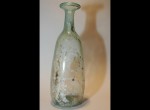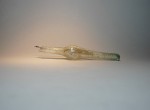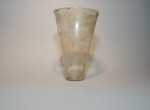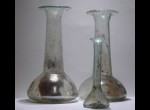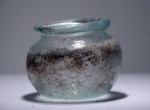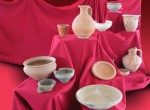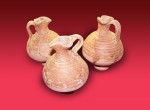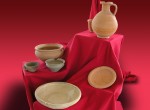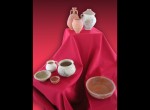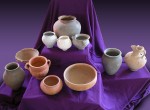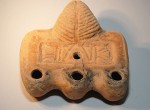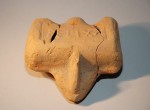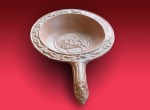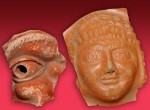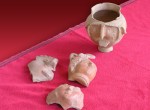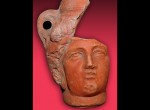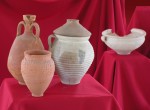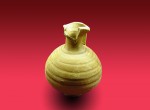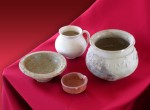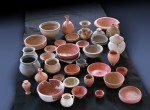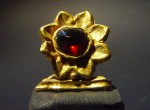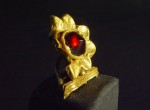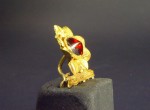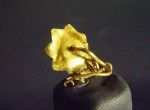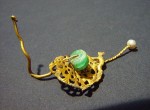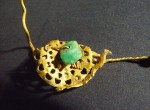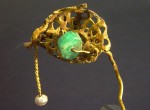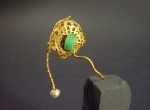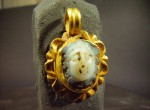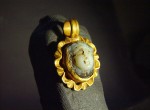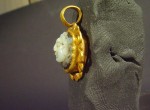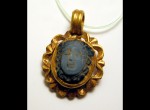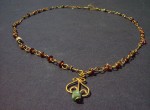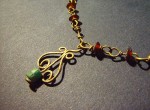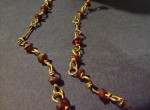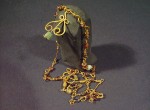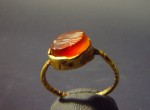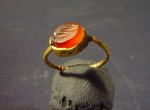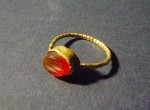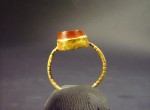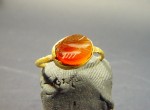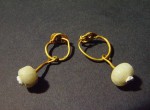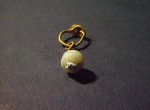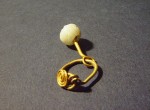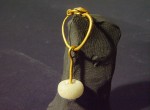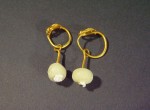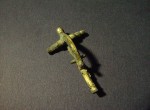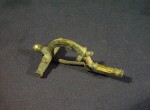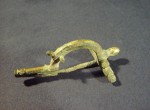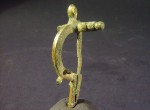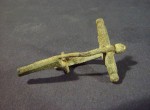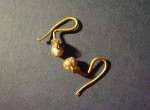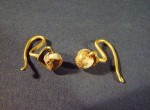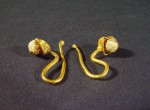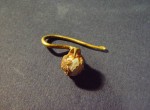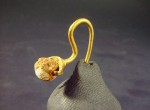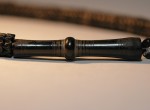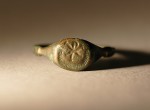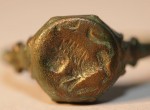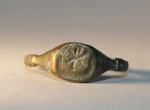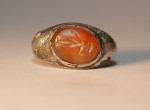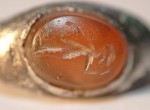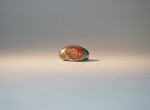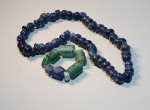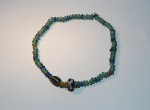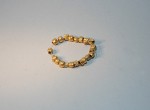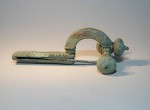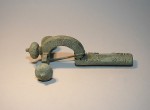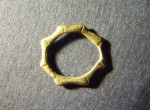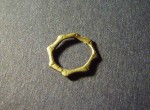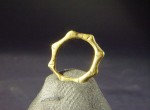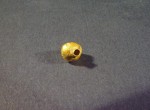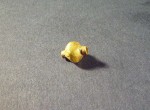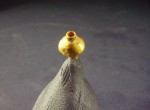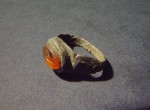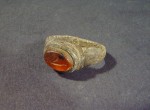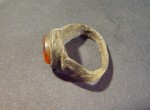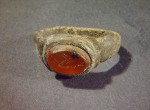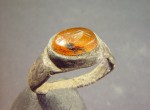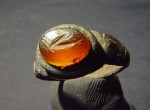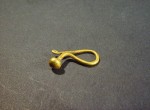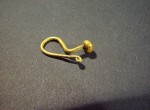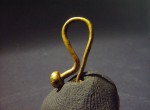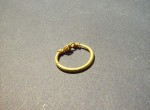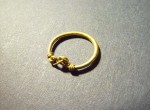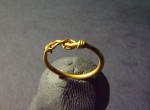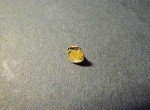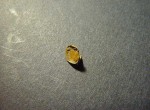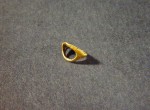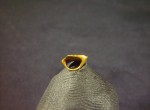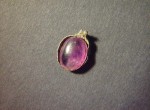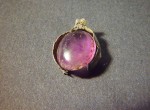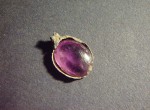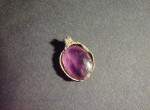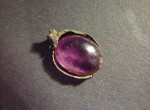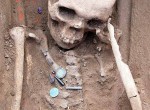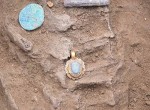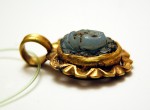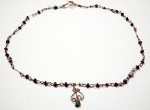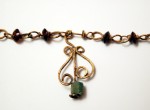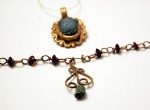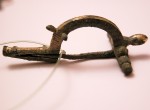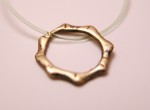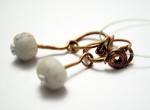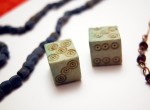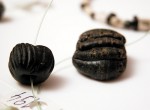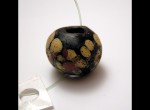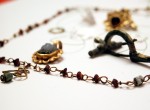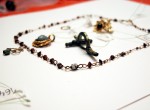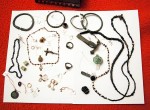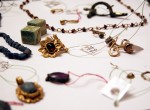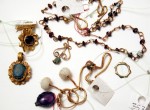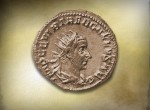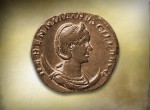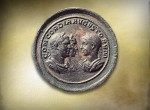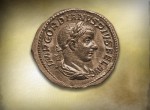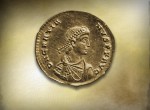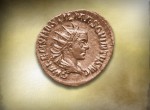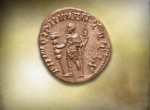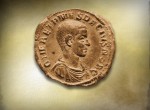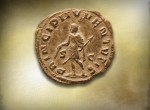-
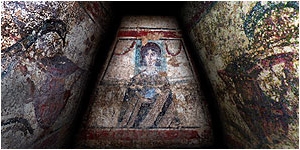 Pagan tomb
Pagan tomb
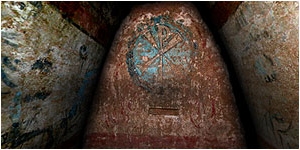 Christian tomb
Christian tomb
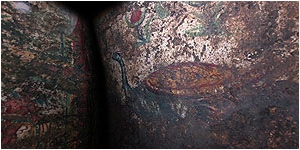 Tomb with Cupid
Tomb with Cupid
-
Glass
The numerous and typologically varied forms of glassware found in Viminacium testify to the quality and craftsmanship of the Roman glassworkers. Their richness and inventiveness are particularly evident on the vessels worked in the millefiore technique and the vessels which imitate the polychromatic effects of marble. The rich range of toilet bottles, primarily balsamaria, testifies to the use of various aromatic oils and medicaments, which were for the Romans a sign of cleanliness of the body and purity of the spirit. The finds show that luxurious and elegant glass tableware was used in addition to the more general ordinary pottery. Numerous beakers, glasses, bowls, bottles and jugs testify to their use in everyday life.
Besides the simpler forms, there are some special glass vessels made by casting, pressing or blowing, either into a mold or shaped completely free-form. Particularly noteworthy are the so-called Mercury bottles and the narrow-necked vessels (guti), the use of which has not been ascertained. The wealth of forms and the simplicity of style are suggestive of serial production, which may well have originated in Viminacium itself, while the more luxurious examples were products of the Cologne, Gallic and Syrian workshops. The glass vessels from Viminacium date from the period from the 1st to the 4th/5th centuries A.D. and give us a good idea of the glass working production in the Roman Empire.
Gallery
-
Pottery
Viminacium, the main city of the province of Upper Moesia, was the centre of various crafts, and pottery-making was one of the most highly developed of them. The excavations carried out so far have uncovered a pottery-making complex. The bulk of the production consisted of vessels, but other goods, such as lamps, bricks, tubes for the water supply system, paving tiles and other products used in building were also made.
The large number of vessels of various forms and quality shows that the craft was highly developed. This is also attested by the finds of numerous moulds for the making of luxurious relief vessels, which have been discovered on all the sites at Viminacium. Most of the earthenware was designed for everyday use, for the preparation and serving of food, but there were also vessels of unusual forms, which were probably used in various rites and the exact function of which has not been established.
The potters of Viminacium not only satisfied the demand of the local population, but also sent a considerable part of their products to other regions. These goods are most commonly found, of course, in the province of the Upper Moesia itself, but they are also fairly common in the areas along the Danube, which tells us something about the routes of their transportation. The pottery material represents the most numerous finds in all the cultural layers at Viminacium and in all the phases of its development. The earliest period is represented by Celtic vessels, while Roman forms predominated in the period from the arrival of the Romans in the 1st century to the 4th century. The period of the migration and the presence of Germanic populations are attested by the pottery dating from the second half of the 5th century and the second half of the 6th century, while the mediaeval vessels belong to the period from the 12th to the 15th century.
Gallery
-
Jewelry
Jewelry belongs to the most interesting products of human culture. In addition to being functional and decorative, it had certain apotropaic and magical functions and protected its owner from the forces of evil. In addition, some of its forms indicated the sex and the social status of the wearer.
The jewelry of Viminacium is very varied and a study of it enables us to trace the individual stages in its development and to learn something of the changes of fashion in personal adornment and in the taste of its owners. Some autochthonous forms of jewelry make their appearance already in the pre-Roman period. After the arrival of the legions and merchants and the beginning of gradual Romanization, the native traditions merged with the new elements, and this combination found expression in the objects of adornment, too. They were made of various materials: metal (gold, silver, bronze, iron), bone, glass paste and various minerals, which were used to add colorist effects. Many examples conform to the general trends of provincial jewelry making, but some finds display certain specific traits that might be associated with the style of local workshops.
Gallery
-
Coins
Gordianus III – The town passed a period of exceptionally dynamic development from the second half of the 2nd century A.D. to the middle of the 4th century A.D. During the reign of Gordianus III (238-244 A.D.) the town obtained the status of a colony of Roman citizens (Colonia Viminacium). At the same time, the town acquired the right to mint copper coins. The production of the mint lasted 16 years (239-256 A.D.). As Viminacium had been the main center of defense of this part of the frontier, its mint occasionally struck imperial silver coins too, from Philip I to Gallienus. It is known that some of the usurpers struck their coins there too. Among them Pacatian, who was proclaimed as emperor by the Moesian legions in 248 A.D. and who had Viminacium as his capital during his short reign, deserves to be mentioned. The local mint in Viminacium had operated from 239/40 to 254/55 A.D. In this interval, the mint did not work on two occasions – in 248/49 and 253/54 A.D. (an. X and an. XV). During its operation, the mint struck coins of several emperors and members of their families: Gordianus III, Philip I, Philip II and Otacilia; Traianus Decius, Etruscilla, Decius II, Hostilian, Trebonius Gal, Volusian, Aemilian, Valerian, Marinianus (posthumous) and Gallienus.
The specific feature of the Viminacium local coins is that the time of minting was marked by letters an(no) and the corresponding Roman number from I to XV (except numbers X and XV when the mint did not produce coins) on the reverse side. These markings denominate the local era, which does not correspond to the Roman official year counting. The official beginning of production was probably on October 21, 239 A.D. (one of the jubilees of Gordianus III). The closing of the Viminacium mint took place during the reign of Gallienus (253-268), who closed down nearly all local mints in the empire. The minting of copper and copper alloy coins was transferred to the imperial mints.
During its operation, the mint coined in copper three nominals, called colloquially by numismatists the large (VB), the medium (SB) and the small (MB) bronze, and the antique names of which were sestercius, dupondius and as. There were some specimens of greater weight than the nominals, representing trial specimens, as well as a few medallions.
The text on the obverse of the Viminacium coins contains the names of the above mentioned emperors and members of their families in nominative and dative. The dative form is characteristic as of the 12th year of the local era. Busts of emperors are most often presented naked, in armor, or in armor and paludamentum. Busts of empresses dressed in stoles, are presented on the crescent, or without it.The legend on the reverse is standard, containing the shortened name of the province and of the town where the coin had been struck: PMS COL VIM (Provincia Moesia Superior Colonia Viminacium). The composition on the reverse consists of a female figure, interpreted as the personification of Moesia Superior, having next to the right leg a bull, and next to the left one a lion, representing symbols of the Legion VII Claudia and Legion IIII Flavia, that were stationed in Moesia Superior, in Viminacium and in Singidunum.
The local era of the Viminacium mint:
ANNO I – 239/240 A.D., struck for Gordianus III
ANNO II – 240/241 A.D., struck for Gordianus III
ANNO III – 241/242 A.D., struck for Gordianus III
ANNO IIII – 242/243 A.D., struck for Gordianus III
ANNO V – 243/244 A.D., struck for Gordianus III, Philip I, Philip II
ANNO VI – 244/245 A.D., struck for Philip II, Otacilia Severus, Philip II
ANNO VII – 245/246 A.D., struck for Philip II, Otacilia Severus, Philip II
ANNO VIII – 246/247 A.D., struck for Philip II, Otacilia Severus, Philip II
ANNO VIIII – 247/248 A.D., struck for Philip II, Otacilia Severus, Philip II
ANNO X – 248/249 A.D., break in operation
ANNO XI – 249/250 A.D., struck for Philip II, Trajan Decius, Herennia Etruscilla
ANNO XII – 250/251 A.D., struck for Trajan Decius, Herennia Etruscilla, Herennius Etruscus, Hostilian, Trebonius Gallus, Volusian
ANNO XIII – 251/252 A.D., struck for Herennia Etruscilla, Herennius Etruscus, Hostilian, Trebonius Gallus, Volusian
ANNO XIIII – 252/253 A.D., struck for Trebonius Gallus, Aemilian, Valerian
ANNO XV – 253/254 A.D., break in operation
ANNO XVI – 254/255 A.D., struck for Trebonius Gallus, Aemilian, Valerian I, Marinian, Gallienus.Gallery

